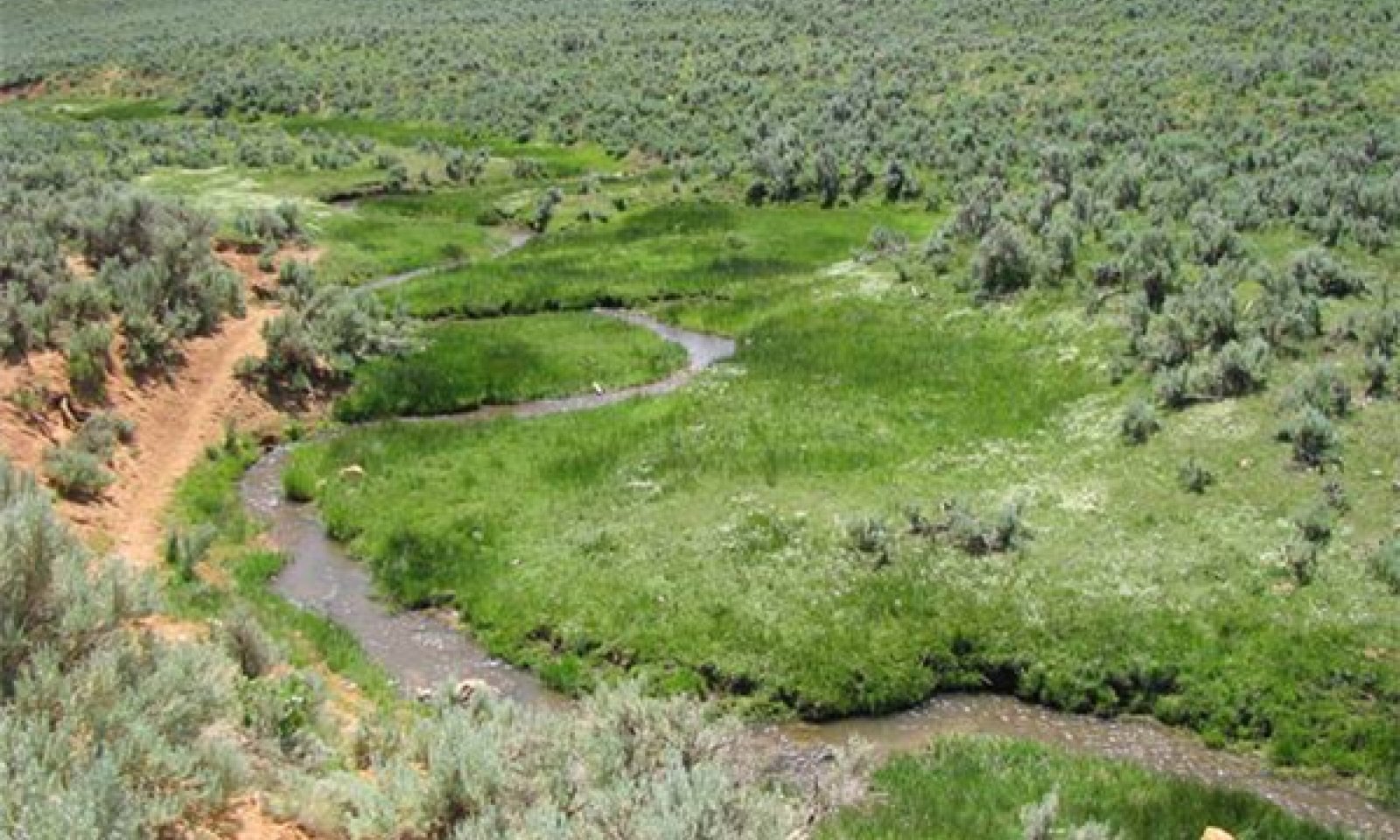

Natural Resources
Conservation Service
Ecological site R034AA011UT
Riparian Complex Perennial Gravelly VIII/E4 (Northwest Territory Sedge)
Accessed: 11/24/2024
General information
Provisional. A provisional ecological site description has undergone quality control and quality assurance review. It contains a working state and transition model and enough information to identify the ecological site.
Ecological site concept
This site is located in MLRA 34A. This site occurs in narrow alluvial valleys and typically occurs downstream of Riparian Complex Perennial Gravelly II/E4 (Northwest Territory Sedge/Baltic Rush) R034AA012UT riparian sites. This site has perennial flow that is high in the spring from snow melt and has some spring influence throughout the year. The streams within this site are dominated by gravel bed material and sandy/silty stream banks. Vegetation cover is high on this site and the roots of the graminoids hold the stream banks together during high flow. This site is characterized by low gradient, meandering E4 channel with high sinuosity.
The riparian complex has the potential to support three plant community components on three different fluvial surfaces. The plant community closest to the stream is dominated by graminoids, typically sedges and rushes. Plant community component two is located on flood plains and flood plain-steps and is dominated by rushes and grasses that can tolerate drier conditions than those that occur on the streambanks. Plant community component three is a mixed shrub dominated community that occurs on terraces. Willow are currently largely absent from this site, although the potential for willow establishment is present.
Associated sites
| R034AA012UT |
Riparian Complex Perennial II/E4 (Nebraska Sedge/Baltic Rush) Site R034AA012UT typically occurs upstream of the R034AA011UT site. This site typically has a steeper slope and narrower valley. |
|---|
Table 1. Dominant plant species
| Tree |
Not specified |
|---|---|
| Shrub |
Not specified |
| Herbaceous |
(1) Carex utriculata |
Physiographic features
This ecological site occurs in MRLA 34A. This site is in the Bear River Basin in the Middle Rocky Mountain Province of the Rocky Mountain System. It typically occurs between 6500 and 6600 feet with valley slopes less than 5%. The water table can be found at the surface to over 60 inches below the surface depending on the distance from the stream channel and fluvial surface. The values in the tables below represent the range of variability in all the fluvial landforms.
Table 2. Representative physiographic features
| Landforms |
(1)
Flood plain
(2) Flood-plain step (3) Point bar |
|---|---|
| Flooding duration | Very brief (4 to 48 hours) to long (7 to 30 days) |
| Flooding frequency | Frequent to rare |
| Ponding frequency | None |
| Elevation | 1,981 – 2,012 m |
| Slope | 1 – 5% |
| Water table depth | 0 – 109 cm |
Climatic features
The average annual precipitation is 10 to 15 inches. Peak precipitation occurs as snow from October through April. This site has cold winters and short summers. Occasional convective thunderstorms produce small amounts of rain from June through September. The average annual temperature is 25 to 55 degrees F. The freeze-free period ranges from 95 to 115 days.
Table 3. Representative climatic features
| Frost-free period (average) | 82 days |
|---|---|
| Freeze-free period (average) | 115 days |
| Precipitation total (average) | 356 mm |
Figure 1. Monthly precipitation range
Figure 2. Monthly average minimum and maximum temperature
Influencing water features
The stream channel in reference condition is an E4 Rosgen stream type. The stream is typically narrow and deep with undercut banks and overhanging vegetation. This channel has a very low width/depth ratio and high sinuosity. The water surface slope is less than two percent. The water velocity in this channel is in balance with the sediment transport capability.
Valley Type(s): VIII- This site typically occurs in a narrow alluvial valley
Reference Stream Type: E4- This channel has high sinuosity, low channel slope and low channel width/depth ratios. Under influence from beaver, the channel could shift to a ponded site directly above the beaver dam.
Channel Material(s):Gravel dominated bed with some cobble in riffles and sand in pools and on stream banks
Delineative Criteria (Low, High)
Entrenchment Ratio (floodprone width / bankfull width): 2.2, 100
Width/Depth Ratio (bankfull width / bankfull depth at riffle): 2.0, 10
Sinuosity (stream length / valley length): 1.3, 2.6
Slope Range: 0.004, 0.02
Channel Materials D50 (particle size index, mm): 8, 12
Channel Materials D84 (particle size index, mm): 32, 48
Soil features
Soils are typically variable in stream valley bottoms because of the stream sediment deposition on flood plains and throughout the valley bottom as the channel naturally migrates. Soils on this site range from sandy to loamy on the surface. Streambanks are typically sandy to silty loam, flood plains and flood-plain steps are typically loamy. Sand and gravel lenses throughout the profile are common on all fluvial surfaces. Buried A horizons are also typically on fluvial influenced soils. The typical fluvial surfaces found on this site are streambanks, flood plains and flood-plain steps. The tables below represent the range in variability between fluvial surfaces.
Table 4. Representative soil features
| Surface texture |
(1) Silt loam (2) Loam (3) Clay loam |
|---|---|
| Drainage class | Very poorly drained to well drained |
| Soil depth | 152 cm |
| Surface fragment cover <=3" | 0 – 20% |
| Surface fragment cover >3" | 0% |
| Subsurface fragment volume <=3" (Depth not specified) |
0 – 65% |
| Subsurface fragment volume >3" (Depth not specified) |
0 – 10% |
Ecological dynamics
The stream channel on this site is sinuous, has a very low width to depth ratio, is slightly entrenched, and the dominant substrate size is gravel (E4 Rosgen channel). The valley bottom is moderately wide for the area. This site typically occurs further downstream in the watershed. The stream channel in this site appears to move from a low width to depth ratio stream channel (“E”) under reference conditions to a “C” channel under the impacts of continuous season long livestock grazing. Grazing impacts vegetation throughout the riparian area, although some species are more sensitive to grazing impacts, such as Northwest Territory sedge. This sedge is not found in areas that have been improperly grazed, while it is found in sections of the stream that have not been grazed for a number of years. Grazing can also shift the vegetation composition or create open space for different plants to establish, such as Kentucky bluegrass or reed canary grass. Kentucky blue grass does not have the same root characteristics as Nebraska sedge or Northwest Territory sedge. Riparian meadow communities dominated by sedges and rushes have a much greater root densities than grasses (Manning et al. 1989). So when these communities are degraded and loses the sedges and Kentucky bluegrass moves in, it decreases the stream bank stability. As stream bank stability decreases, fine sediment on the stream bank is eroded, thus creating different channel morphology.
This ecological site has been found in valley bottoms with perennial stream channels with slopes less than 2%. The channel in the valley bottom is highly sinuous. High water typically occurs in May. The channel is typically a Rosgen “E” channel (Rosgen 1996). Vegetation in a low width to depth ratio channel is essential in holding the stream banks together. Typical stream bank vegetation on this site is Nebraska sedge (Carex nebrascensis) and Northwest Territory sedge (Carex utriculata). These herbaceous roots growing on the stream banks in this site have an important effect in reducing erosion rates of channel banks (Smith 1976), developing new stream banks, and in providing stability to mature stream banks (Kleinfelder et al. 1992). The root structure of these rhizomatous sedges makes them particularly effective at bank stabilization in fine sediment soils (Steed & DeWald 2003) by binding the soil and adding extra cohesion to the stream bank (Thorne 1990).
Plant communities on this site are arranged according to proximity to channel and depth to water. Sedges and rushes are typically found adjacent to the channel (plant community component 1). They have characteristics that allow them to tolerate long periods of inundation and flooding. Graminoids, including grasses, sedges and rushes, can be found growing on the flood plain (plant community component 2) and mesic shrubs and graminoids can be found on the flood-plain step (plant community component 3). The coarse soil on the site would indicate the potential for willow establishment if sedges were not already present. Willows are not shade tolerant and have difficultly germinating in the shade of other plants. Other shrubs are present on this site, such as currant, rose and shrubby cinquefoil. Willows, when present, are typically found on the floodplain.
Observed grazing influence on this site has been attributed to bank sloughing and shrub decline (WICHE 75). Northwest Territory sedge is typically not found in areas with heavy grazing while Nebraska sedge appears to be more tolerant of grazing. These sedges have similar root structures and both provide bank stability. Surveys performed on this site in the 1970s indicate that shrubs were present, but provided low cover and were decadent. Lack of shrubs presently indicates that conditions for willow regeneration have not been present. Grazing impacts may also lead to a change in plant community composition. Kentucky bluegrass is a non-native grass often found within this site. This grass is shallow rooted and does not have the bank stability capacity of rhizomatous sedges. This shift in plant communities has an effect on stream bank stability. Riparian meadow communities dominated by sedges and rushes have a much greater root densities than grasses (Manning et al. 1989). So when these communities are degraded and lose the sedges and Kentucky bluegrass established, it decreases the stream bank stability (Manning et al. 1989).
Plant community components are related to proximity to the stream channel and depth to water table. The plant communities will shift spatially depending on channel position.
Northwest Territory sedge is found closest to the stream channel or in low swales in the floodplain where the water table is high. Northwest Territory sedge and Nebraska sedge are able to tolerate inundation for extended periods of time, which is why they are found in areas with high water table. Their root structure also allows them to withstand flood events. The rhizomatous nature of these sedges allow them to dominate areas where they are found, leading to low diversity (Hoag & Zierke 1998). Willows can come into this community under the correct conditions. Willows require fresh wet sediment for germination and this occurs at the site after high flow deposits sediment on the floodplain. Willow typically occurs on this site further away from the channel, but still within the streambank/floodplain community.
Plant community component 2 is drier than plant community component 1 and is further from the stream and has a deeper water table. The community is composed of various graminoids and forbs, particularly Baltic rush and in one location tufted hair grass.
Plant community component 3 is dominated by graminoids and shrubs, specifically currant, rose, basin big sagebrush, and shrubby cinquefoil. Shrubby cinquefoil is the dominant shrub. This community is typically found on stable fluvial surfaces with soil development (Padgett et al. 1989). This community is composed of species that are shallow rooted and will provide little streambank stability if the stream cuts into this community (Padgett et al. 1989).
Plant communities with higher groundwater can be colonized by reed canary grass and all communities can be colonized by Kentucky bluegrass and thistles.
State and transition model

Figure 3. State and Transition Model R034AA011UT
More interactive model formats are also available.
View Interactive Models
More interactive model formats are also available.
View Interactive Models
Click on state and transition labels to scroll to the respective text
Ecosystem states
State 1 submodel, plant communities
State 2 submodel, plant communities
State 3 submodel, plant communities
State 1
Reference State
The reference state for this site is a low gradient, meandering, very low width/depth stream channel with associated streambank, flood plain and flood-plain step landforms and plant community components. The stream channel typically meanders across the entire valley bottom, which effects the placement of each plant community. All plant communities can be present in this state.
Community 1.1
E4 Channel

Figure 4. Site overview
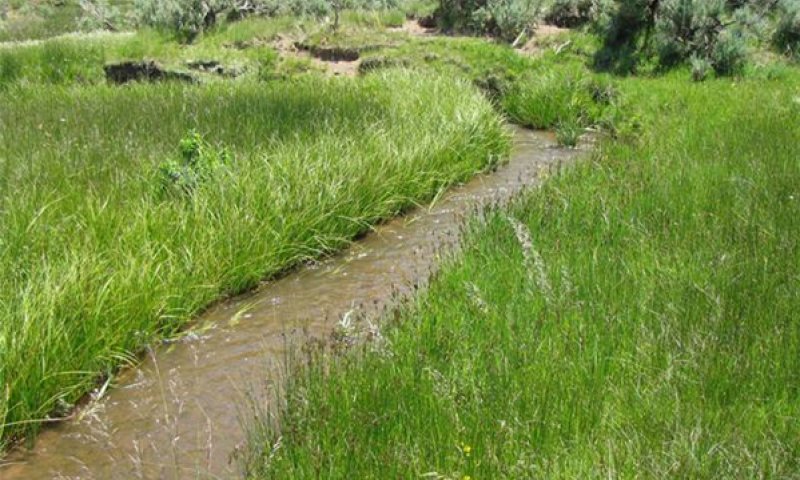
Figure 5. Streambank (PCC1) community
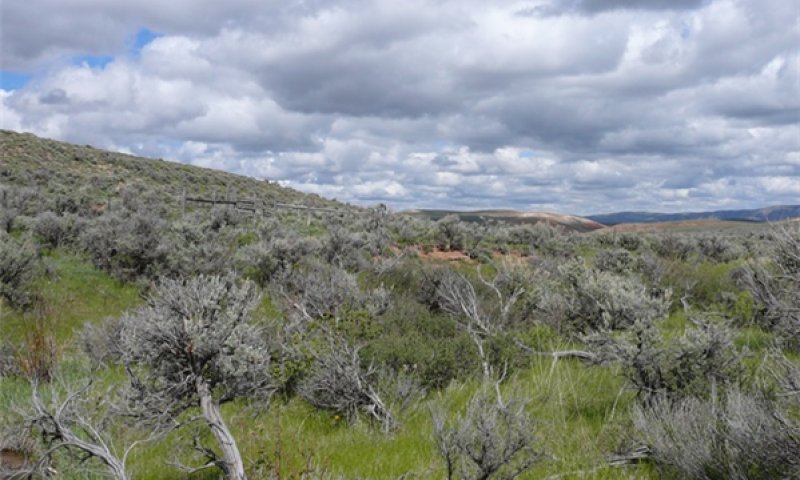
Figure 6. Flood-plain step plant community (PCC3)

Figure 7. Streambank and flood plain plant communities
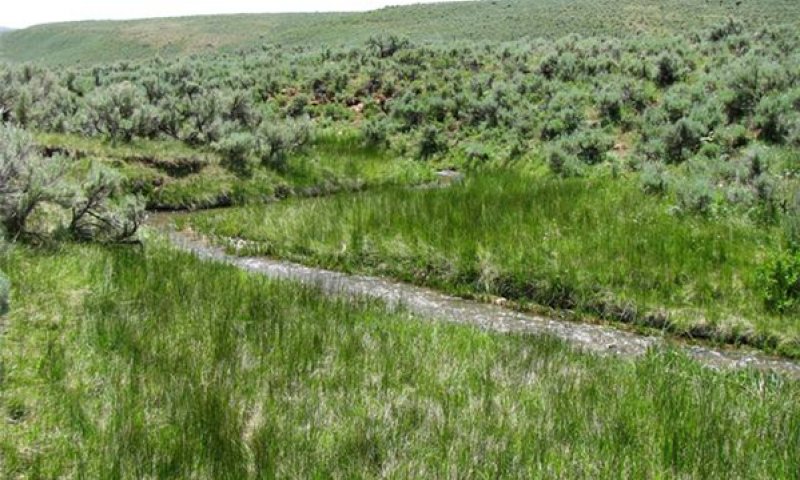
Figure 8. Flood plain plant communities with sagebrush on hi
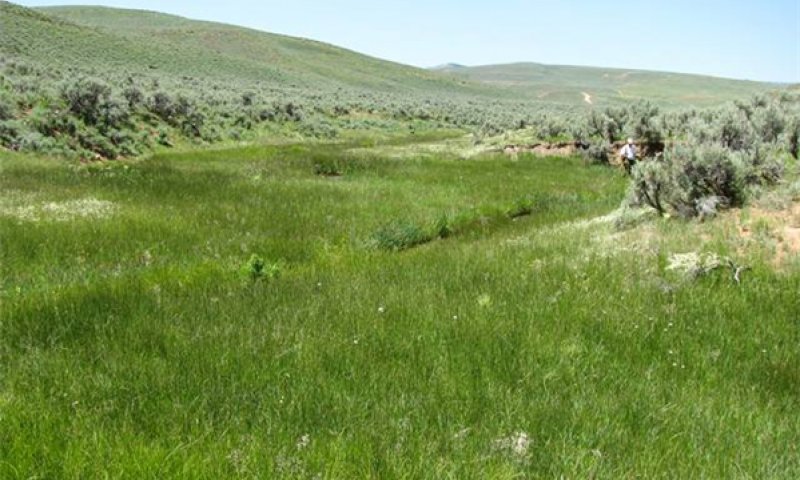
Figure 9. Graminoid dominated flood plain community
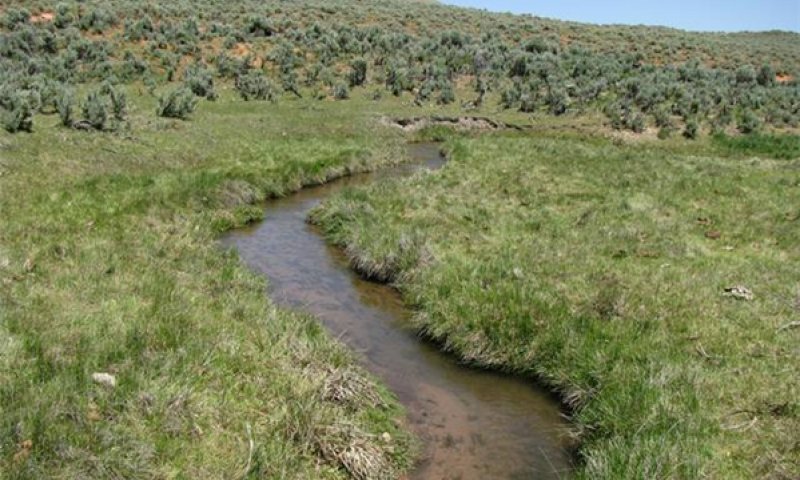
Figure 10. Grazing effects on plant community components
This phase has a narrow and deep meandering channel with well-developed vegetation on the streambanks, predominantly composed of sedges and rushes. The flood plain receives regular flooding from snowmelt in the spring. All plant community components may be present in this phase.
Figure 11. Annual production by plant type (representative values) or group (midpoint values)
Table 5. Annual production by plant type
| Plant type | Low (kg/hectare) |
Representative value (kg/hectare) |
High (kg/hectare) |
|---|---|---|---|
| Grass/Grasslike | 897 | 2130 | 3363 |
| Shrub/Vine | – | 56 | 224 |
| Forb | 22 | 45 | 112 |
| Total | 919 | 2231 | 3699 |
Table 6. Soil surface cover
| Tree basal cover | 0% |
|---|---|
| Shrub/vine/liana basal cover | 0% |
| Grass/grasslike basal cover | 0% |
| Forb basal cover | 0% |
| Non-vascular plants | 0-16% |
| Biological crusts | 0% |
| Litter | 40-60% |
| Surface fragments >0.25" and <=3" | 0% |
| Surface fragments >3" | 0% |
| Bedrock | 0% |
| Water | 0% |
| Bare ground | 0-10% |
Table 7. Woody ground cover
| Downed wood, fine-small (<0.40" diameter; 1-hour fuels) | – |
|---|---|
| Downed wood, fine-medium (0.40-0.99" diameter; 10-hour fuels) | – |
| Downed wood, fine-large (1.00-2.99" diameter; 100-hour fuels) | – |
| Downed wood, coarse-small (3.00-8.99" diameter; 1,000-hour fuels) | – |
| Downed wood, coarse-large (>9.00" diameter; 10,000-hour fuels) | – |
| Tree snags** (hard***) | – |
| Tree snags** (soft***) | – |
| Tree snag count** (hard***) | 0 per hectare |
| Tree snag count** (hard***) | 0 per hectare |
* Decomposition Classes: N - no or little integration with the soil surface; I - partial to nearly full integration with the soil surface.
** >10.16cm diameter at 1.3716m above ground and >1.8288m height--if less diameter OR height use applicable down wood type; for pinyon and juniper, use 0.3048m above ground.
*** Hard - tree is dead with most or all of bark intact; Soft - most of bark has sloughed off.
Table 8. Canopy structure (% cover)
| Height Above Ground (m) | Tree | Shrub/Vine | Grass/ Grasslike |
Forb |
|---|---|---|---|---|
| <0.15 | – | 0-2% | 0-5% | 0-5% |
| >0.15 <= 0.3 | – | 0-12% | 0-5% | 0-5% |
| >0.3 <= 0.6 | – | – | 5-50% | – |
| >0.6 <= 1.4 | – | – | 5-30% | – |
| >1.4 <= 4 | – | 0-8% | – | – |
| >4 <= 12 | – | – | – | – |
| >12 <= 24 | – | – | – | – |
| >24 <= 37 | – | – | – | – |
| >37 | – | – | – | – |
Community 1.2
C4 Channel
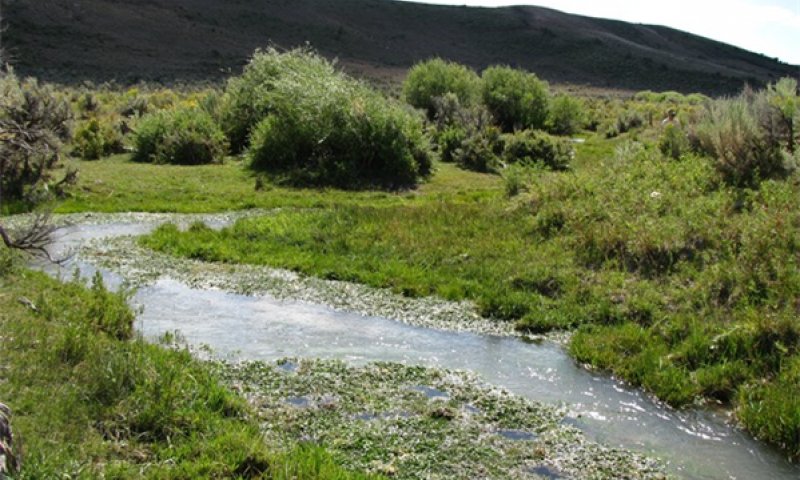
Figure 12. Channel narrowing with early colonizing species, C
This phase has a slightly wider channel and more deposition and erosion occurring around the meander bends. This phase may occur after large floods or may occur after grazing. All plant community components may be present in this phase.
Pathway 1.1A
Community 1.1 to 1.2


Flooding results in sediment deposition and erosion and scouring of vegetation on stream banks around meanders or removal of vegetation from native ungulate grazing
Pathway 1.2A
Community 1.2 to 1.1


Vegetation re-establishment, specifically deep rooted, rhizomatous species
State 2
Degraded State
This state is characterized by a shift in the composition of plant community components due to season long grazing pressure. The sedges and willow typically found on the streambanks are particularly palatable to livestock and can be grazed at a level that weakens the plant eventually leading to loss from the site (i.e. Northwest Territory sedge). Kentucky bluegrass often replaces these sedges along the streambank (see Ecological Dynamics section). Bank sloughing is prevalent.
Community 2.1
F4 Channel
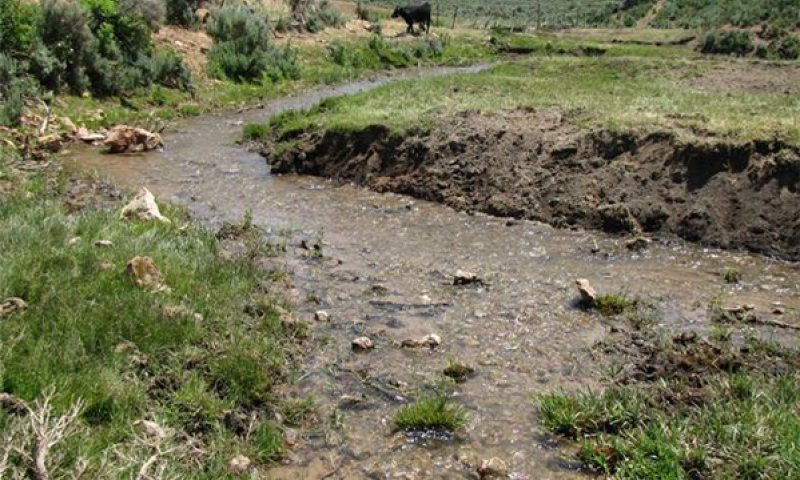
Figure 13. Eroded banks, loss of streambank plant community (
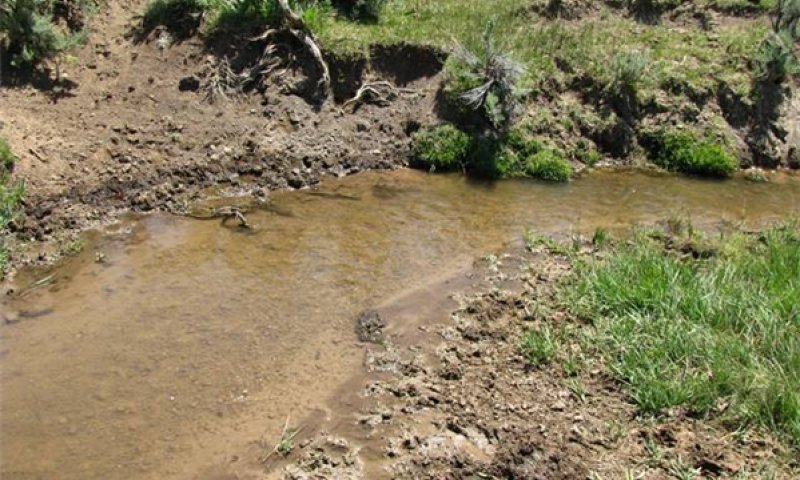
Figure 14. Bank erosion and channel widening
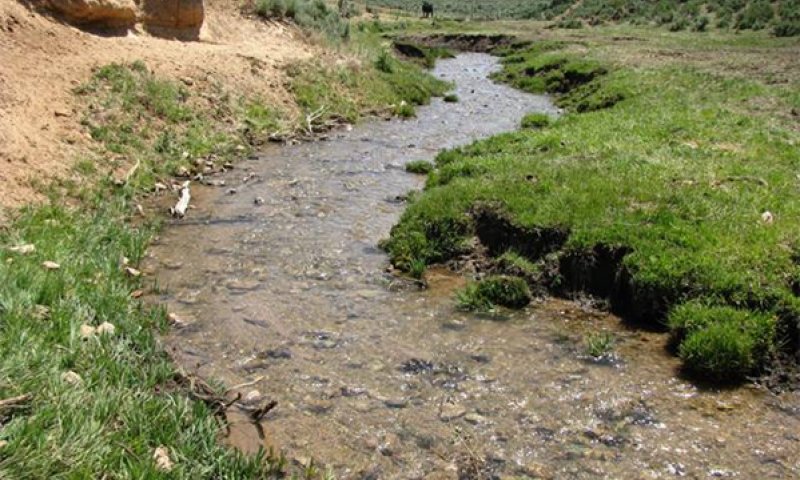
Figure 15. Bank sloughing and channel widening
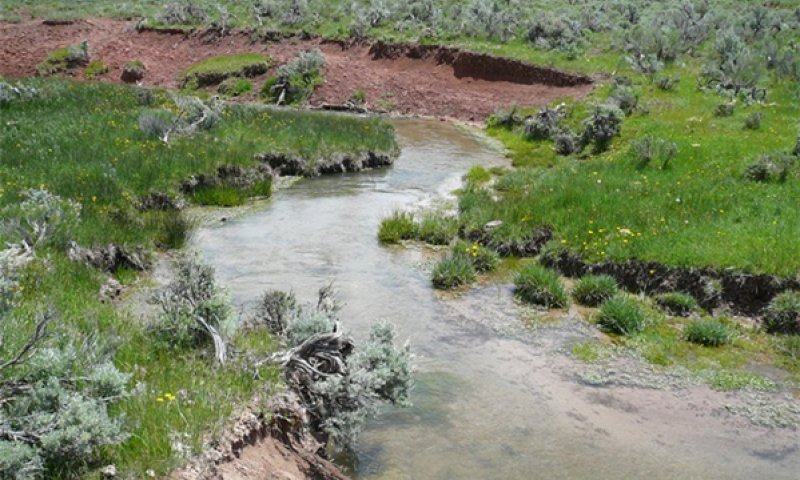
Figure 16. Channel widening
This phase results from excessive lateral erosion creating a wide, shallow stream with unstable streambanks. PCC 1 is largely lost in this phase.
State 3
Re-established Flood plain
This state is characterized by riparian areas that have down cut and reestablished floodplains at a lower elevation. The riparian area is narrower than reference condition, but otherwise functions similarly.
Community 3.1
C4 Channel
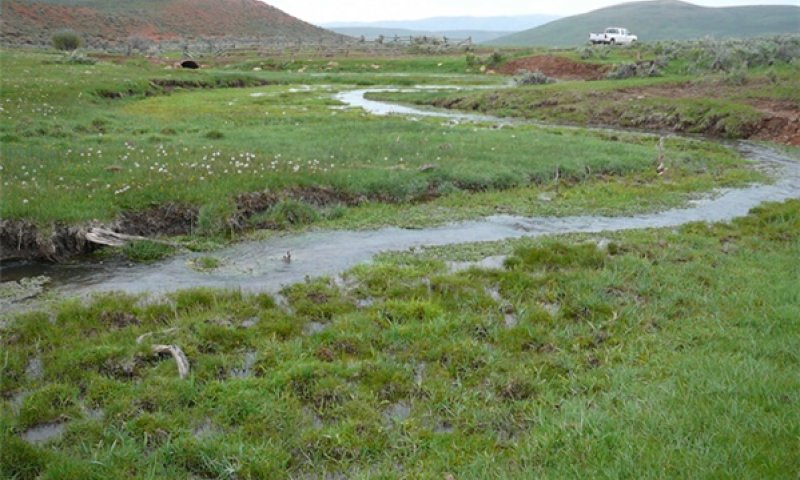
Figure 17. Early colonizing species begining to establish on
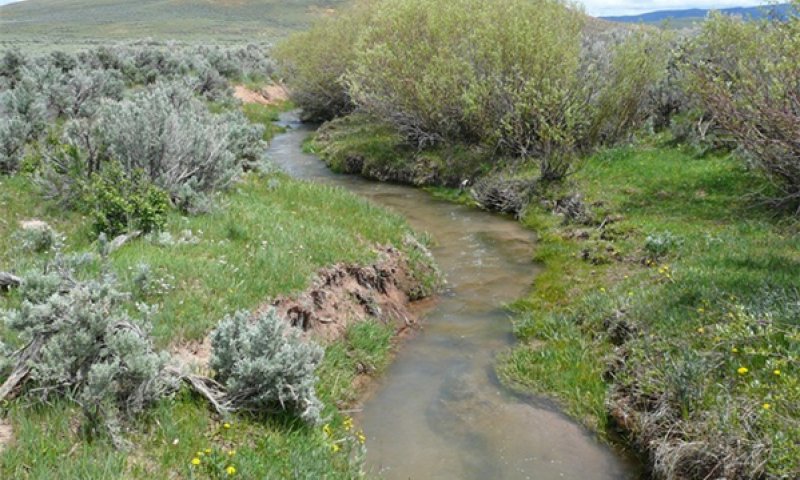
Figure 18. Channel narrowing after bank sloughing, stream ban
This phase functions similarly to 1.2 at a lower elevation with a narrower floodplain and plant community components.
Community 3.2
E4 Channel
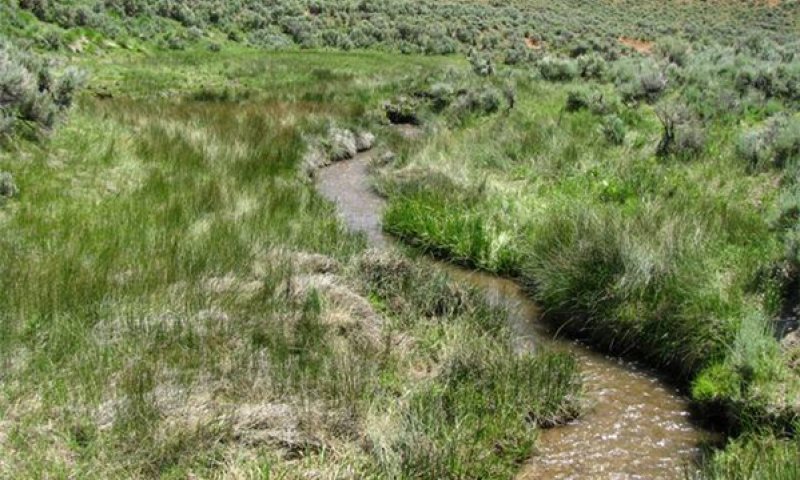
Figure 19. Recovering narrow channel

Figure 20. Streambank community establishing
This phase functions similarly to 1.1 at a lower elevation with a narrower floodplain and plant community components.
Pathway 3.1A
Community 3.1 to 3.2


Flooding results in sediment deposition and erosion and scouring of vegetation on stream banks around meanders or removal of vegetation from native ungulate grazing
Pathway 3.2A
Community 3.2 to 3.1


Vegetation re-establishment, specifically deep rooted, rhizomatous species
Transition 1A
State 1 to 2
Change in vegetation on the banks to shallow rooted species, decrease in bank stability and bank sloughing causing a change in channel geometry to a wider shallower channel
Transition 2A
State 2 to 3
Vegetation re-establishment on streambanks and floodplain, rest from grazing pressure
Transition 3A
State 3 to 2
Change in vegetation on the banks to shallow rooted species, decrease in bank stability and bank sloughing causing a change in channel geometry to a wider shallower channel
Additional community tables
Table 9. Community 1.1 plant community composition
| Group | Common name | Symbol | Scientific name | Annual production (kg/hectare) | Foliar cover (%) | |
|---|---|---|---|---|---|---|
|
Grass/Grasslike
|
||||||
| 1 | PCC1 Graminoids | 1121–3363 | ||||
| Northwest Territory sedge | CAUT | Carex utriculata | 1121–3363 | 5–85 | ||
| Nebraska sedge | CANE2 | Carex nebrascensis | 22–1681 | 2–50 | ||
| woolly sedge | CAPE42 | Carex pellita | 0–841 | 0–15 | ||
| mountain rush | JUARL | Juncus arcticus ssp. littoralis | 0–673 | 0–30 | ||
| Grass-like (not a true grass) | 2GL | Grass-like (not a true grass) | 0–168 | 0–10 | ||
| Grass, perennial | 2GP | Grass, perennial | 0–112 | 0–10 | ||
| Grass, annual | 2GA | Grass, annual | 0–56 | 0–5 | ||
| 2 | PCC2 Graminoids | 112–1233 | ||||
| mountain rush | JUARL | Juncus arcticus ssp. littoralis | 224–2242 | 4–60 | ||
| Nebraska sedge | CANE2 | Carex nebrascensis | 22–560 | 5–60 | ||
| Grass-like (not a true grass) | 2GL | Grass-like (not a true grass) | 0–112 | 0–10 | ||
| Grass, perennial | 2GP | Grass, perennial | 0–112 | 0–5 | ||
| clustered field sedge | CAPR5 | Carex praegracilis | 0–78 | 0–5 | ||
| sedge | CAREX | Carex | 0–43 | 0–5 | ||
| woolly sedge | CAPE42 | Carex pellita | 0–6 | 0–2 | ||
| 3 | PCC3 Graminoids | 11–336 | ||||
| clustered field sedge | CAPR5 | Carex praegracilis | 0–112 | 0–20 | ||
| mountain rush | JUARL | Juncus arcticus ssp. littoralis | 0–112 | 0–10 | ||
| western wheatgrass | PASM | Pascopyrum smithii | 0–56 | 0–15 | ||
| Grass, perennial | 2GP | Grass, perennial | 0–56 | 0–10 | ||
|
Forb
|
||||||
| 1 | PCC1 Forb | 22–112 | ||||
| Forb, perennial | 2FP | Forb, perennial | 0–112 | 0–10 | ||
| Forb, annual | 2FA | Forb, annual | 0–22 | 0–5 | ||
| watercress | NAOF | Nasturtium officinale | 0–22 | 0–2 | ||
| buttercup | RANUN | Ranunculus | 0–11 | 0–2 | ||
| willowherb | EPILO | Epilobium | 0–6 | 0–2 | ||
| 2 | PCC2 Forb | 28–224 | ||||
| Forb, perennial | 2FP | Forb, perennial | 0–56 | 0–5 | ||
| goldenbanner | THERM | Thermopsis | 0–22 | 0–5 | ||
| Forb, annual | 2FA | Forb, annual | 0–22 | 0–2 | ||
| common yarrow | ACMI2 | Achillea millefolium | 0–11 | 0–5 | ||
| aster | ASTER | Aster | 0–11 | 0–2 | ||
| meadow thistle | CISC2 | Cirsium scariosum | 0–11 | 0–2 | ||
| field horsetail | EQAR | Equisetum arvense | 0–11 | 0–2 | ||
| aster | SYMPH4 | Symphyotrichum | 0–11 | 0–2 | ||
| stinging nettle | URDI | Urtica dioica | 0–6 | 0–2 | ||
| Richardson's geranium | GERI | Geranium richardsonii | 0–6 | 0–2 | ||
| 3 | PCC3 Forbs | 112–224 | ||||
| aster | SYMPH4 | Symphyotrichum | 0–224 | 0–10 | ||
| thistle | CIRSI | Cirsium | 0–56 | 0–5 | ||
| common yarrow | ACMI2 | Achillea millefolium | 0–28 | 0–2 | ||
| Forb, annual | 2FA | Forb, annual | 0–11 | 0–2 | ||
| Forb, perennial | 2FP | Forb, perennial | 0–11 | 0–2 | ||
| slender cinquefoil | POGR9 | Potentilla gracilis | 0–6 | 0–2 | ||
|
Shrub/Vine
|
||||||
| 2 | PCC2 Shrubs | 0–224 | ||||
| Geyer willow | SAGE2 | Salix geyeriana | 0–112 | 0–10 | ||
| willow | SALIX | Salix | 0–112 | 0–10 | ||
| Shrub, broadleaf | 2SB | Shrub, broadleaf | 0–56 | 0–5 | ||
| 3 | PCC3 Shrubs | 34–168 | ||||
| Saskatoon serviceberry | AMAL2 | Amelanchier alnifolia | 0–112 | 0–5 | ||
| rubber rabbitbrush | ERNA10 | Ericameria nauseosa | 0–112 | 0–5 | ||
| Shrub, deciduous | 2SD | Shrub, deciduous | 0–56 | 0–10 | ||
| basin big sagebrush | ARTRT | Artemisia tridentata ssp. tridentata | 6–56 | 0–5 | ||
| coralberry | SYOR | Symphoricarpos orbiculatus | 0–34 | 0–15 | ||
| yellow rabbitbrush | CHVI8 | Chrysothamnus viscidiflorus | 0–11 | 0–10 | ||
| currant | RIBES | Ribes | 0–11 | 0–5 | ||
| white sagebrush | ARLU | Artemisia ludoviciana | 0–11 | 0–5 | ||
| Woods' rose | ROWO | Rosa woodsii | 0–6 | 0–5 | ||
Interpretations
Supporting information
Type locality
| Location 1: Rich County, UT | |
|---|---|
| General legal description | Middle sections of the Otter Creek streams, Middle Branch, North Fork and South Fork of Otter Creek. |
Other references
Kleinfelder, D., S. Swanson, G. Norris, and W. Clary. 1992. Unconfined compressive strength of some streambank soils with herbaceous roots. Soil Sci. Am. J. 56: 1920-1925.
Manning, M.E., S.R. Swanson, T, Svejcar, and J. Trent. 1989. Rooting characteristics of four intermountain meadow community types. Journal of Range Management 42(4): 309-312.
Rosgen, D.L., 1996. Applied River Morphology. Wildland Hydrology Books, Pagosa Springs, Colorado, and Ft. Collins, CO.
Ryan, G. 1975. Aquatic habitat inventory of streams on National Resource Land. Western Interstate Commission for Higher Education, Boulder, Co. 65p.
Smith, D.G. 1976. Effect of vegetation on lateral migration of anastomosed channels of a glacier meltwater river. Geological Society of American Bulletin 87: 857-860.
Steed, J.E. and L.E. DeWald. 2003. Transplanting sedges (Carex spp.) in southwestern riparian meadows. Restoration Ecology 11(2): 247-256.
Thorne, C.R. 1990. Effects of vegetation on riverbank erosion and stability. In: Thornes, J.B. (ed.). Vegetation and Erosion. John Wiley and Sons Ltd. pp 125-144.
USDA, NRCS. 2008. (Electronic) Field Office Technical Guide. Available online at: http://efotg.nrcs.usda.gov/efotg_locator.aspx.
USDA, Natural Resource Conservation Service. 2004. National Forestry Handbook. Available online at: http://soils.usda.gov/technical/nfhandbook/.
USDA, NRCS. 2007. The PLANTS Database. National Plant Data Center, Baton Rouge, LA 70874-4490 USA. Available online at: http://plants.usda.gov.
USDA, NRCS. 2003. National Range and Pasture Handbook. Available online at: http://www.glti.nrcs.usda.gov/technical/publications/nrph.html.
USDA, NRCS Soil Survey Manuals for appropriate counties within MLRA 34A.
USDA, NRCS, 2007. Southerland, W. B., Technical Supplement 3E, National Engineering Handbook 654, Rosgen Stream Classification Technique – Supplemental Materials.
USDA, USFS, 2010. Fire Effects Information System Database. Available online at: http://www.fs.fed.us/database/feis/.
USDI, USGS, 2010. National Water Information System. Available online at: http://waterdata.usgs.gov/nwis/.
Contributors
Sarah Quistberg
Rangeland health reference sheet
Interpreting Indicators of Rangeland Health is a qualitative assessment protocol used to determine ecosystem condition based on benchmark characteristics described in the Reference Sheet. A suite of 17 (or more) indicators are typically considered in an assessment. The ecological site(s) representative of an assessment location must be known prior to applying the protocol and must be verified based on soils and climate. Current plant community cannot be used to identify the ecological site.
| Author(s)/participant(s) | |
|---|---|
| Contact for lead author | |
| Date | |
| Approved by | |
| Approval date | |
| Composition (Indicators 10 and 12) based on | Annual Production |
Indicators
-
Number and extent of rills:
-
Presence of water flow patterns:
-
Number and height of erosional pedestals or terracettes:
-
Bare ground from Ecological Site Description or other studies (rock, litter, lichen, moss, plant canopy are not bare ground):
-
Number of gullies and erosion associated with gullies:
-
Extent of wind scoured, blowouts and/or depositional areas:
-
Amount of litter movement (describe size and distance expected to travel):
-
Soil surface (top few mm) resistance to erosion (stability values are averages - most sites will show a range of values):
-
Soil surface structure and SOM content (include type of structure and A-horizon color and thickness):
-
Effect of community phase composition (relative proportion of different functional groups) and spatial distribution on infiltration and runoff:
-
Presence and thickness of compaction layer (usually none; describe soil profile features which may be mistaken for compaction on this site):
-
Functional/Structural Groups (list in order of descending dominance by above-ground annual-production or live foliar cover using symbols: >>, >, = to indicate much greater than, greater than, and equal to):
Dominant:
Sub-dominant:
Other:
Additional:
-
Amount of plant mortality and decadence (include which functional groups are expected to show mortality or decadence):
-
Average percent litter cover (%) and depth ( in):
-
Expected annual annual-production (this is TOTAL above-ground annual-production, not just forage annual-production):
-
Potential invasive (including noxious) species (native and non-native). List species which BOTH characterize degraded states and have the potential to become a dominant or co-dominant species on the ecological site if their future establishment and growth is not actively controlled by management interventions. Species that become dominant for only one to several years (e.g., short-term response to drought or wildfire) are not invasive plants. Note that unlike other indicators, we are describing what is NOT expected in the reference state for the ecological site:
-
Perennial plant reproductive capability:
Print Options
Sections
Font
Other
The Ecosystem Dynamics Interpretive Tool is an information system framework developed by the USDA-ARS Jornada Experimental Range, USDA Natural Resources Conservation Service, and New Mexico State University.
Click on box and path labels to scroll to the respective text.